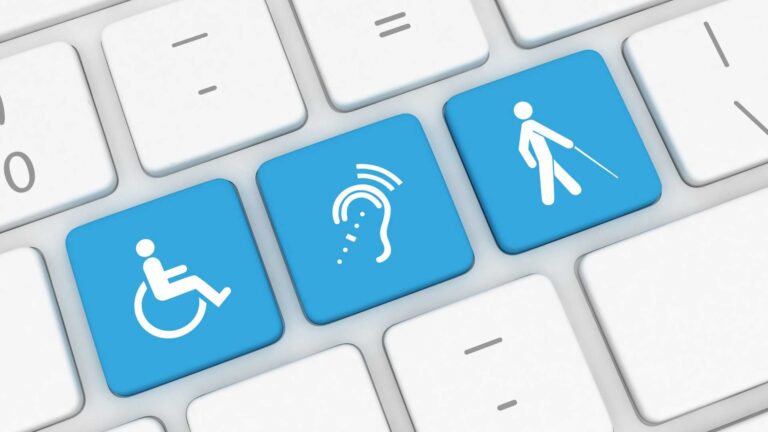Global Accessibility Awareness Day (GAAD), observed on May 18 each year, is a powerful reminder of the importance of keeping technology accessible to everyone. This day presents an opportunity to raise awareness about the challenges faced by individuals with disabilities, including autism, and to emphasize the role of technology in creating a more inclusive society. Technology permeates every part of our life. We don’t leave the house without our phones, use the internet daily to learn information, and navigate our streets with GPS.
Using technology has become a necessity, a skill of almost parallel importance to walking or speaking. Yet, an underappreciated element of this development is accessibility. Over one billion people, 16% of the world’s population, experience some form of disability. About 1 in 100 children worldwide live with autism; the real number may be higher.
By fostering understanding, acceptance, and support, GAAD highlights the need for accessible technology solutions that enable individuals with autism to thrive and fully participate in the digital world. Technology is vital in promoting accessibility and inclusion for individuals with autism. It provides a medium through which they can express themselves, engage with others, and access educational resources. For instance, assistive technologies such as communication apps, visual schedules, and sensory tools help individuals with autism communicate their needs, manage daily routines, and regulate sensory sensitivities. These technologies empower individuals to overcome communication barriers, enhance independence, and actively participate in society.
As proud members of a movement to spread autism awareness and acceptance, ABA Centers of Florida prizes highlighting how to make technology more empathetic, welcoming, and helpful toward those diagnosed with autism spectrum disorder (ASD). This blog will cover Global Accessibility Awareness Day, its importance, and how technology can help those with autism achieve their goals and live happily.
1. What is Global Accessibility Awareness Day?
The initial Global Accessibility Awareness Day (GAAD) celebration was on May 9, 2012. The initiative was conceived by Joe Devon, a web developer, and Jennison Asuncion, an accessibility professional, to raise awareness about digital accessibility and promote inclusive design practices.
Devon and Asuncion recognized the need for a dedicated day to bring attention to the challenges faced by individuals with disabilities in accessing technology and the internet. They envisioned GAAD as a platform to encourage dialogue, collaboration, and education among technology developers, designers, policymakers, and the public.
The inaugural GAAD received significant support and participation from organizations, advocates, and individuals worldwide. Various webinars, seminars, workshops, and accessibility testing events marked the day. These events aimed to spread awareness about the importance of inclusive design and accessibility, highlight best practices and inspire positive change. Since its inception, GAAD has grown into a global movement, observed annually on the third Thursday of May.
2. What Global Accessibility Awareness Day Means for Autism
Global Accessibility Awareness Day (GAAD) holds great significance for individuals with autism as it highlights the importance of creating technology that is accessible and inclusive for them. Kids on the spectrum face unique sensory and communication challenges. Considering that much of modern education and interaction happens online or adjacent to technology, it’s worth reflecting on how technology can be compatible with spectrum disorders.
Technology can play a transformative role in the lives of kids diagnosed with autism. The following are some important considerations that communities, policymakers, and tech manufacturers should make when approaching autism.
- User-Centered Design: Technology developers should adopt a user-centered design approach, involving individuals with autism and their families in the design and testing phases, ensuring that the technology meets their needs, preferences, and abilities. Incorporating feedback from the autism community can lead to more intuitive interfaces, customizable settings, and inclusive features.
- Accessible Communication: Communication apps, social skills training programs, and augmentative and alternative communication (AAC) tools can significantly benefit individuals with autism. Technology can facilitate visual supports, picture exchange systems, and voice output devices to enhance communication abilities. Developers can create user-friendly interfaces, customizable symbols, and speech recognition features that cater to various communication styles.
- Sensory Support: Many individuals with autism have sensory sensitivities. Technology can offer sensory support tools such as noise-canceling headphones, customizable visual displays, and color overlays to help regulate sensory experiences. Virtual reality (VR) and augmented reality (AR) applications can also create controlled sensory environments for desensitization and therapeutic purposes.
- Educational Resources: Technology provides many educational resources for individuals with autism. Accessible e-learning platforms, educational apps, and online courses can offer personalized and interactive learning experiences. Developers can design inclusive features such as visual cues, interactive lessons, and progress-tracking systems to support individuals with autism in acquiring knowledge and developing skills.
- Online Support Systems: Technology can facilitate social interaction and support networks for individuals with autism. Online communities, support groups, and social networking platforms specifically designed for individuals with autism can provide opportunities for connection, sharing experiences, and finding peer support.
- Accessibility Standards and Guidelines: Technology companies should follow accessibility standards and guidelines, such as the Web Content Accessibility Guidelines (WCAG), to ensure their products and services are accessible to individuals with autism. These standards involve providing alternative text for images, keyboard navigation, clear and consistent design, and compatibility with assistive technologies.
- Training and Education: Educating professionals, educators, and caregivers about the potential of technology in supporting individuals with autism is crucial. Training programs, workshops, and resources can enhance their knowledge and understanding of accessible solutions.
ABA Centers of Florida has previously highlighted some incredible applications that assist parents of children on the spectrum with education and daily living. Many of these implement the features mentioned above, such as progress tracking, sensory considerations, and customizable features that can help nonverbal ASD kids, for example.
Empathy, collaboration, and understanding are what Global Accessibility Awareness Day is all about. This celebration is a powerful reminder that the world isn’t one size fits all and that we can create a more inclusive society where individuals with autism can feel safe and thrive.
ABA Centers of Florida, Autism, and Technology
At ABA Centers of Florida, we specialize in Applied Behavior Analysis (ABA) therapy, the gold standard in autism therapy. Our personalized programs meet your child’s developmental needs and teach them valuable skills that last a lifetime. Through positive reinforcement and play therapy, kids can grow unexpectedly and improve communication, academic performance, daily tasks, and work toward independence.
ABA Therapy is made possible through technology. Using state-of-the-art data gathering and progress tracking applications, therapists collect and assess your child’s plan to help them reach certain milestones. Call us at (772) 773-1975 or reach out on our website for a free consultation to start working toward an autism-friendly tomorrow.








